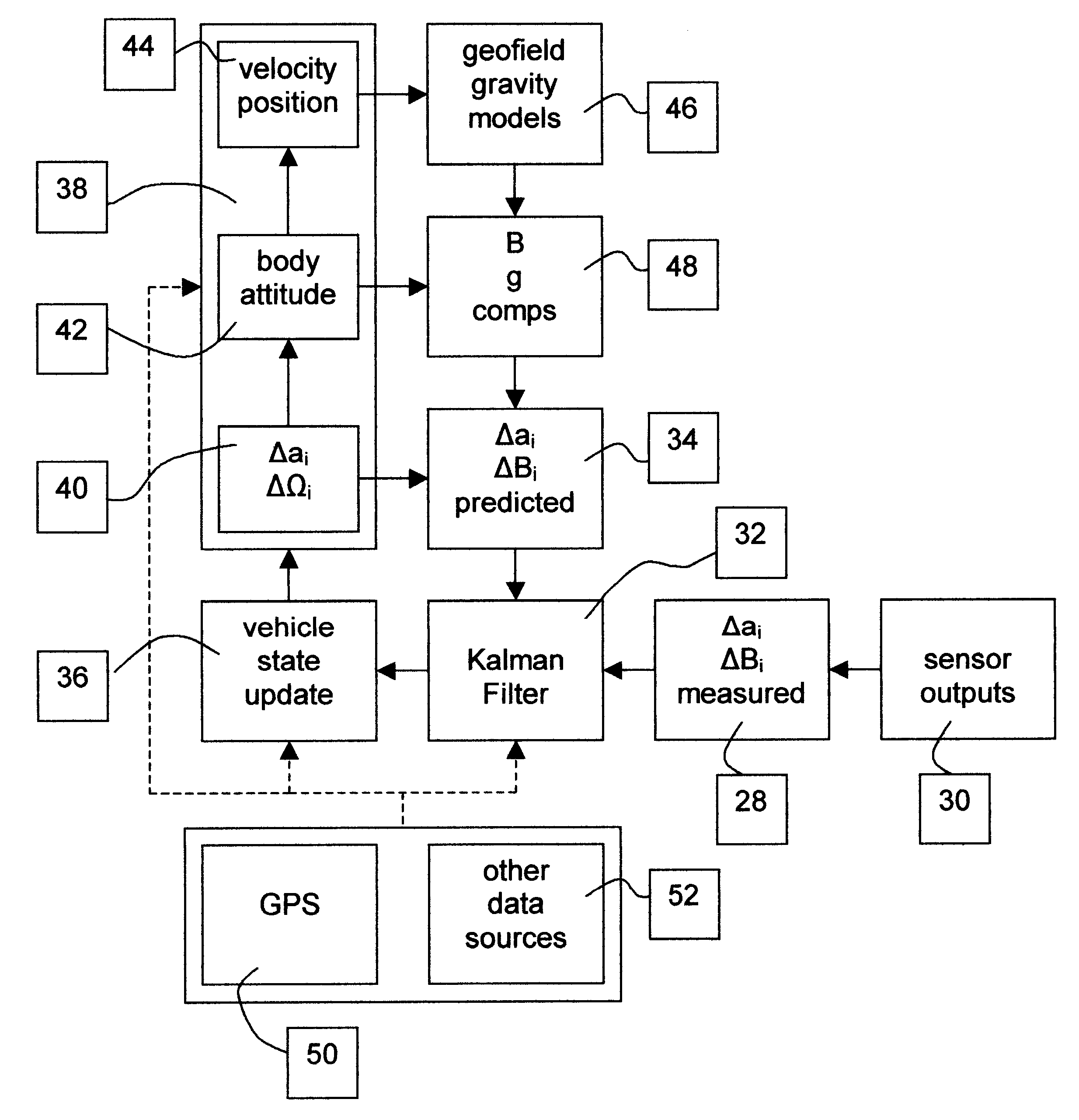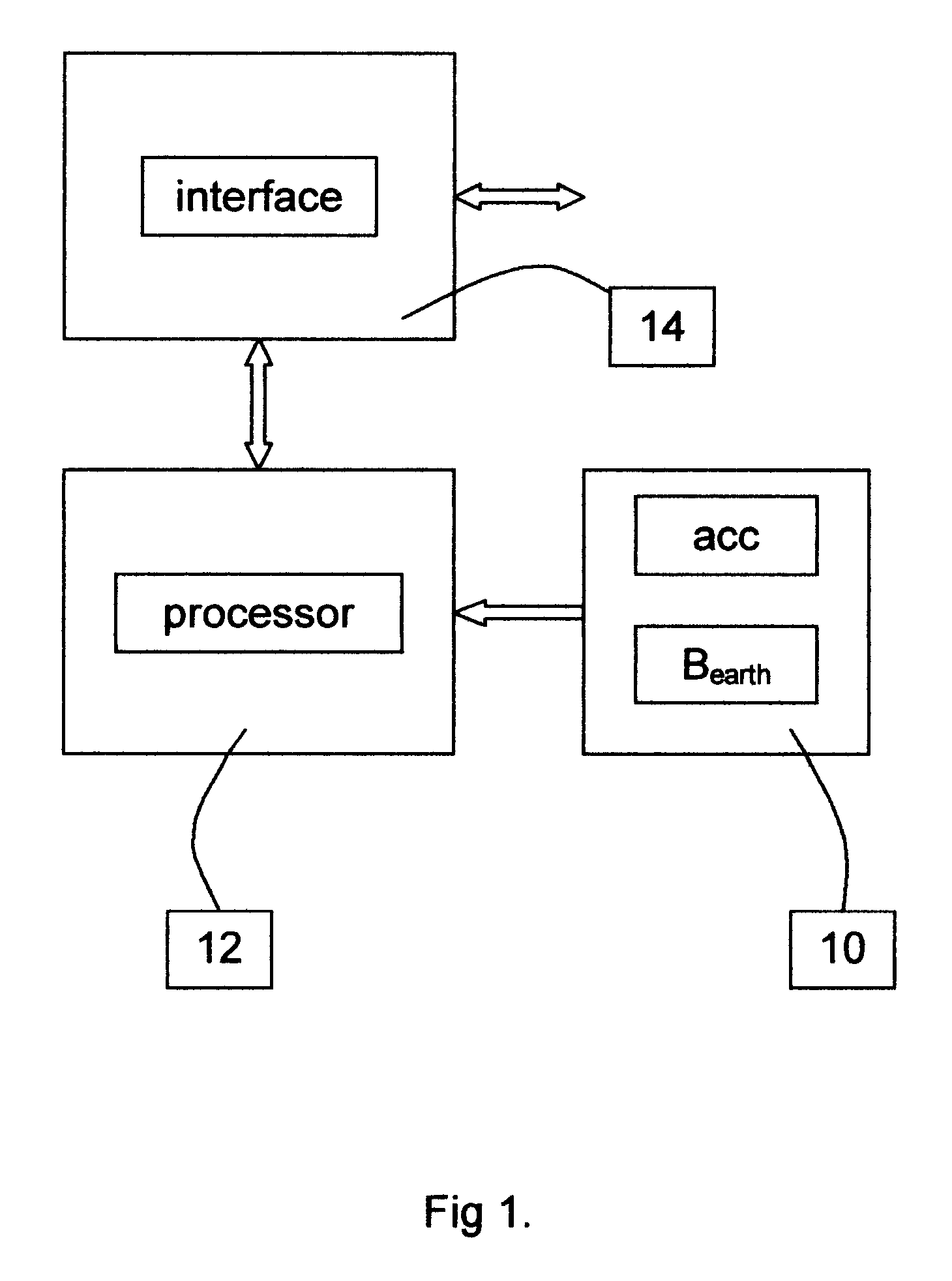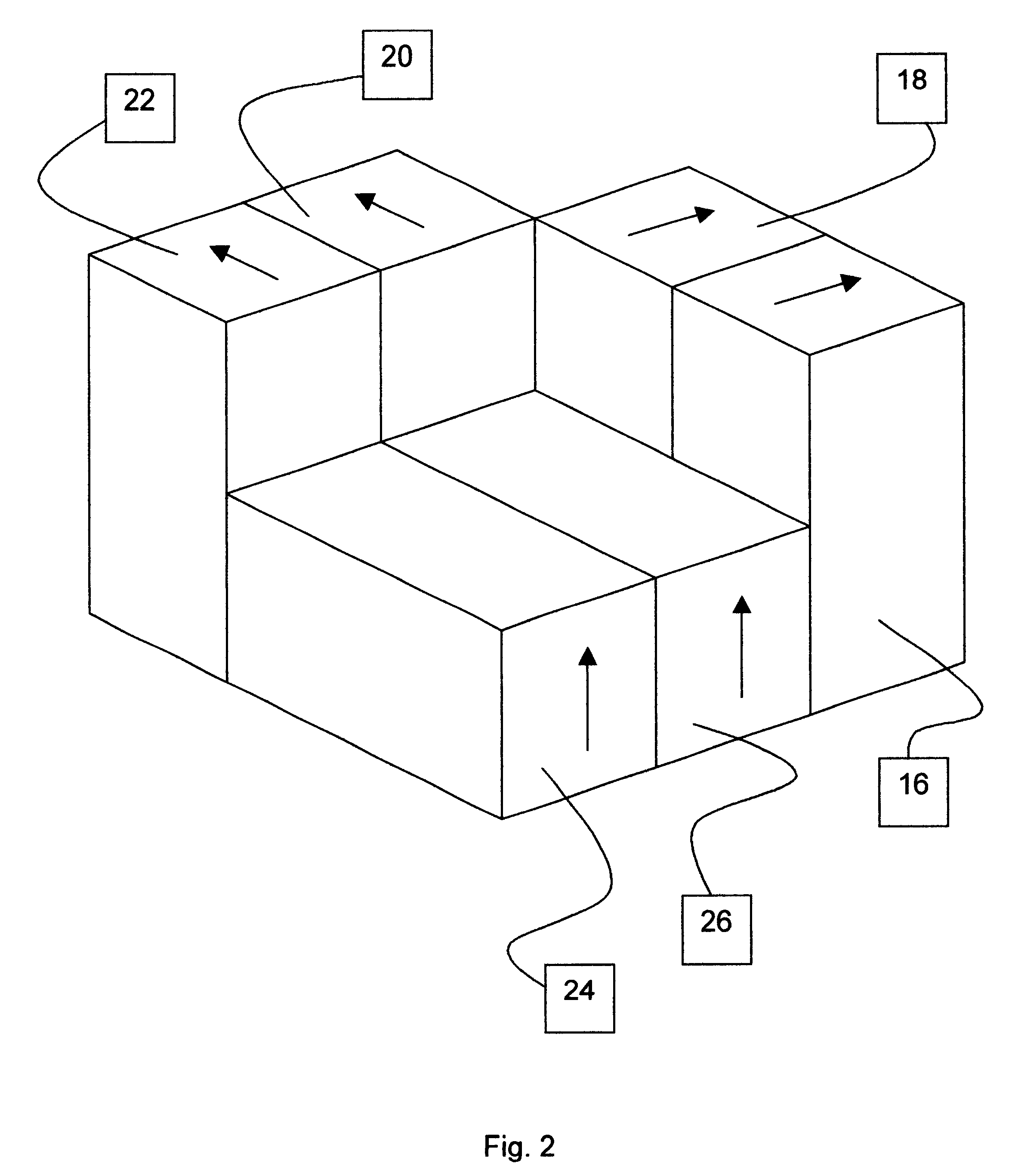Geophysical inertial navigation system
a technology of geophysical inertial navigation and navigation system, applied in the direction of navigation instruments, instruments, surveying and navigation, etc., can solve the problems of inability to continue safe flights under meteorological conditions (imc) with only gps capability, use expensive optical fiber gyros, and existing ins are too costly for typical g/a installations
- Summary
- Abstract
- Description
- Claims
- Application Information
AI Technical Summary
Problems solved by technology
Method used
Image
Examples
Embodiment Construction
FIG. 1 is a block diagram showing the primary elements of a geophysical inertial navigation system. The primary elements are a processor unit 10, an acceleration- and geomagnetic-field sensor unit 12, and an interface unit 14. In the preferred embodiment, the geophysical quantities sensed are the direction and strength of the geomagnetic field and the direction and strength of the earth's gravity. Sensor unit 12 is strapped down to the body (not shown) of the vehicle (aircraft), and may or may not be, integrated into the same package as the processor unit 10 and interface unit 14. In some applications, it would be advantageous to mount sensor unit 12 remotely from the processor and interface units 10 and 14. The components of sensor unit 12 may be separated as well. For example, mounting the sensor unit 12 in the tail of an aircraft or at a wingtip would reduce any interfering effects of magnetic fields form on-board objects and electrical currents. In addition, processor unit 10 an...
PUM
 Login to View More
Login to View More Abstract
Description
Claims
Application Information
 Login to View More
Login to View More - Generate Ideas
- Intellectual Property
- Life Sciences
- Materials
- Tech Scout
- Unparalleled Data Quality
- Higher Quality Content
- 60% Fewer Hallucinations
Browse by: Latest US Patents, China's latest patents, Technical Efficacy Thesaurus, Application Domain, Technology Topic, Popular Technical Reports.
© 2025 PatSnap. All rights reserved.Legal|Privacy policy|Modern Slavery Act Transparency Statement|Sitemap|About US| Contact US: help@patsnap.com



